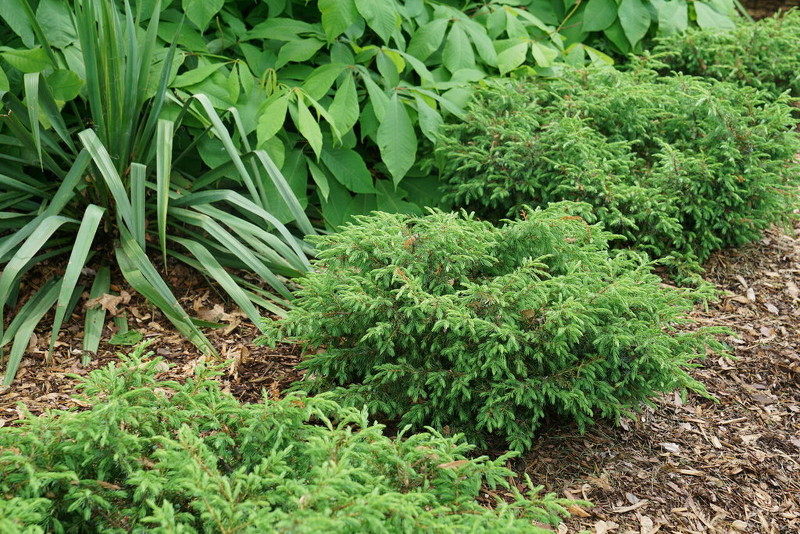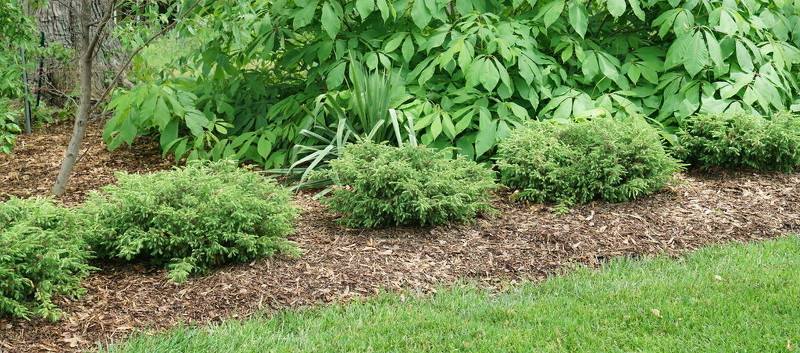In the Cupressaceae family of cypress, junipers are highly popular evergreen coniferous trees and shrubs used for hedges, windbreaks, and foundation planting especially. They are long-lived and drought-tolerant. Sizes range from one foot-high dwarf shrubs to pyramidal trees. The wood is used for building, especially Juniperus virginiana, which is also called “red cedar,” and the berries are used to make sauces, and flavor beers and gin.
Selecting the proper site is important for helping your juniper thrive. They prefer full sun to lightly shaded locations for strong stable growth, and they require well-drained soil.

What You Need to Plant Juniper
- Shovel or trowel
- Compost or manure
- Garden spade
Where to Plant Juniper
Choose your site with care since Junipers’ long tap root rarely transplants well once a plant is established. Junipers are not a plant that will succeed in shade, as their branches spread out to get more sun, and become weak and break. Light shade is acceptable.
Excellent drainage is a must for your junipers. Overly wet soil can cause the roots to rot.
Juniper Spacing
Support shouldn’t be necessary for juniper, unless you are growing a very young tree sapling that might be helped with a stake.
As to spacing, there are such a variety of sizes and growth patterns that you’ll need to check the mature growth sizes for your variety.
Ground-cover types such as ‘Blue Star,’ may grow out five to ten feet, and so should be spaced a minimum of six feet apart.
If you are creating a hedge, a range of planting between two-to-four feet on center is a rough average to use, depending on the cultivar you are growing and how close-knit you’d like them.

Steps To Plant Juniper
You’ll want to prepare for planting by watering the plant and the planting area. Then dig your hole, as deep as the current root ball and twice as wide. Have some compost and mulch if desired ready to top dress the plant.
Step 1 - Choose your location – one with full sun through slight shade, and very well-drained soil.
Step 2 - Dig your hole twice as wide as the plant and as deep.
Step 3 - Water the planting area and your juniper.
Step 4 - Loosen up roots if circling in the container, shake off nursery soil to the side and place in hole.
Step 5 - Backfill soil with local soil.
Step 6 - Topdress with nursery soil and compost.
Step 7 - Water the plant to remove air pockets in the soil.
When to Plant Juniper
Nursery plants in pots can be planted any time of year as long as the soil is neither frozen nor a river of mud.
Transplanting of young plants is best done in early spring or fall. Older plants may resist transplanting because of the tap root, which in mature trees can be 25 feet long.
Usually the best time of day for planting is early morning or evening – avoiding the head of the day.
Transplanting Juniper
While junipers are resilient and long-lived tough growers, they don’t take to transplanting well. This is mostly due to the very long tap root they grow. Thus, splitting or dividing is not recommended for junipers. The best way to propagate and make more plants is by layering cuttings.
An ideal time for this is late winter/early spring or early fall. Using a sterilized pruner, clipping a section of new growth where it meets the older growth. Dip into rooting hormone and grow in perlite or other sterile rooting medium.
Repotting container junipers can be done in spring or fall. Water the plant well and move it into a pot about one to three inches wider than the previous pot. Remove the old soil, loosen any compacted roots, and replace with fresh potting mix. Water the pot again.
 |
Author Erica Browne Grivas - Published 10-08-2021 |
